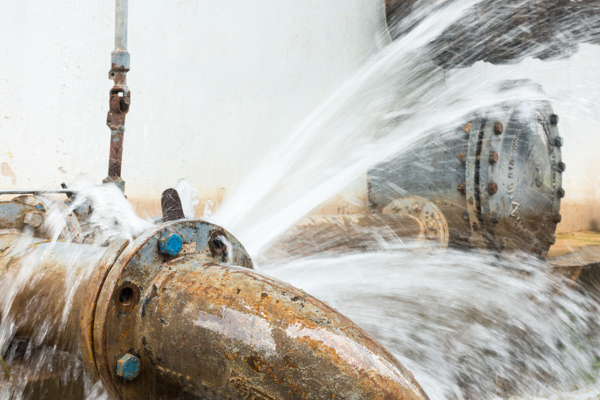The basics of backflow and why they still matter in modern plumbing
Peter McLennan wants to get back to the basics of Cross Connection Control.
So what is backflow prevention and Cross Connection Control all about? – Isn’t it about protecting the drinking water supply?
We risk seeing in our industry what always happens when the interests of politics or finance get involved. We see the watering down of regulations and requirements, the use of less effective protection, and the introduction of ‘rationalist thinking’ to explain and downplay the potential risks.
Let me explain what I mean by rationalist thinking. Wikipedia suggests that rationalists have such a high confidence in reason that proof and physical evidence are unnecessary to ascertain truth – in other words, “there are significant ways in which our concepts and knowledge are gained independently of experience”. So in the context of backflow prevention, the risks can be mathematically lowered based on the minimal empirical evidence.
Cross connection control, which utilises a number of methods, including backflow prevention devices to protect the drinking water, is needed in our sophisticated plumbing systems. Cross connection control is everything from the air gap in the toilet cistern to the break in the filling pipe on water tankers to the backflow prevention device in the modern dual check water meter. It is so common, the general populace does not know it exists or how important it is in keeping them safe.
We know that cross connection control protects the public water supply from possible contamination when a backflow event occurs, and we also know that every time there is a water main break that backsiphonage is evident, and evidence shows that there are approximately two water main breaks every hour in Australia. So why do different water authorities across Australia assess the risks differently?
We now see an almost national approach to residential containment or boundary protection being provided by either dual check water meters or individual dual check valves at the meter set. We understand that a residential connection is generally low hazard and this type of device is suitable, but this falls down as the dual check valve is never tested and only generally replaced at the time of the meter changeover. This differs across Australia, but is in the region of every 8 -12 years.
Recent research out of the United States reveals that the failure rate in the first year for a dual check valve is nearly 8%. This means that the backflow prevention in 8 out of every 100 properties, if subject to a backsiphonage event, could potentially contaminate the drinking water supply. We can surmise that at the end of the average 10 year life of a water meter, potentially 80% of the residential network no longer has effective backflow protection.
This research has led to the mandatory replacement of the dual check valve components being changed out every year in some regions in the USA. Costly yes, but what is the potential cost of an incident whereby the public drinking water cannot be used, which results in lack of public confidence in the drinking water?
Once we ’fix’ residential connections, let’s draw our attention to commercial and industrial connections. We see an almost universal approach across Australia where the connection is assessed based on the degree of hazard the process within the property presents and a boundary containment device is stipulated to be installed and tested by the water supplier. The installing plumber is expected to have the device tested to confirm effective operation and the device is registered with the local council against that property.
From this point the management of the ongoing annual testing of the device varies greatly across the country. Some water suppliers maintain the register of devices and send reminders to the property owners when the next test is due, while others register the devices and then take no further action. The onus then falls on the property owner to remember to have the device tested annually – and if they don’t the device may remain untested for years. I guess the thinking here is that if there is a backflow event and the device fails and allows contaminants back into the public water supply, the liability is placed onto the property owner because they have a duty of care and a responsibility to maintain the device in a serviceable condition.
It could be argued that, due to the property owner’s lack of expert knowledge in water supply and the ignorance to the chance of a backflow incident occurring, it is the responsibility of the water supplier to manage the annual testing and ensure the property owner complies.
We are lucky in this country to have such a good water supply but as further reduction of services and budgets impact the operations of the water suppliers, we increase the risk of one day seeing a news report where people were poisoned or fatalities have occurred due to an unprotected cross connection allowing contaminants back into the water supply.
Human life relies on a safe water supply and only by fully understanding cross connection control and ensuring it is managed closely can we have confidence that the water is safe to drink. After all safe drinking water is a basic necessity of life.
Peter McLennan has been involved with Backflow Prevention in Australia since the late 1980s. He is the President of the Backflow Prevention Association of Australia Inc., and Treasurer of the Backflow Prevention Association of Australia Inc. Queensland Chapter. Visit www.bpaa.org.au to find out more about how the Backflow Prevention Association of Australia Inc. can help you understand Cross Connection Control and Backflow Prevention.

